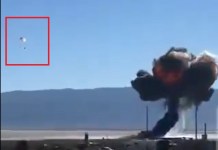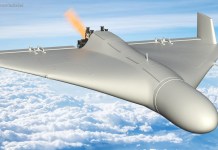The US Army has announced the activation of two new batteries for the Israeli made Iron Dome interceptor system. The batteries are operated at Fort Bliss, Texas, in close proximity to White Sands Missile Range, New Mexico, the testing site for the system.
Manufactured by Israel’s Rafael Advanced Defense Systems Ltd and Israel Aerospace Industries, it is a mobile all-weather air defense system with more than 2,000 interceptions and a success rate touted as greater than 90 percent.
The system can protect deployed and maneuvering forces, as well as the Forward Operating Base (FOB) and urban areas, against a wide range of indirect and aerial threats.
“These actions are part of the Army’s force realignment initiative,” the Army said in the statement. “Upon receipt of the first battery, the Army will begin training and integration of Iron Dome into the Army’s Integrated Battle Command System.”
Fort Bliss base will possibly integrate the system in December. The second system will be received in January from Israel. “These Iron Dome batteries will provide the Army with an interim cruise missile defense capability,” the statement read.
The Army further reported that it is converting a Terminal High Altitude Area Defense (THAAD) battery at Fort Bliss for the configuration of the two Iron Domes. The final decision for the deployment will be “through either a forward stationing decision and/or Dynamic Force Employment concept in response to contingency operations.”
According to Raytheon which is partnering with Israeli Rafael to produce the Iron Dome in the US, SkyHunter (the US version of Iron Dome) Iron Dome’s Tamir missile knocks down incoming threats launched from ranges of 4-70 km. Tamir missiles feature electro-optical sensors and steering fins with proximity fuze blast warheads.
SkyHunter interceptor can be integrated into the U.S. Army’s Multi-Mission Launcher (MML) and other V-SHORAD systems.
Reportedly, Congress pressed the US Army to adopt the system while the Army sees it as a short term solution until it develops the Integrated Air and Missile Defense Battle Command System (IBCS). The Army has said that the Iron Dome system cannot be integrated with IBCS and therefore, will be treated as a standalone system.
“Over time, the Iron Dome system has proven its effectiveness to intercept a wide range of indirect and aerial threats, with a success rate of 90%,” Sen. John Boozman said in a letter pressing on why Pentagon should deploy the Iron Dome system. “Iron Dome’s proven air defense capability solidifies why a deployment to the CENTCOM (Central Command) theater will enhance force protection posture in the region.”
In the early 2000s, the Israeli military recognized the threat from Short-ranged rockets carrying warheads and explosives. Terrorist groups like Hamas and the Popular Front for the Liberation of Palestine were smuggling these to be used as terror weapons.
At the time Washington financed Israeli companies, Rafael Advanced Defense Systems Ltd and Israel Aerospace Industries, to develop the Iron Dome system to counter the threat.
On October 29, former Defense Secretary Mark Esper met Israeli Prime Minister Benjamin Netanyahu and saw the Iron Dome. “The Iron Dome was developed by Israel with US assistance,” Netanyahu said in answer to a question.
“Now we share so many things; the US helps us in so many ways. It’s a privilege for us to have reciprocity in this relationship. [Iron Dome has] protected us. We will be happy if it protects America, too.”
“There is an artificial intelligence function that analyzes incoming rounds and determines if people or facilities are in danger,” said the Department of Defense in a statement. “If not, the AI would not recommend a shot. A person is always in the kill loop, however, according to an Israeli Defense Forces officer whose identity is protected.”




